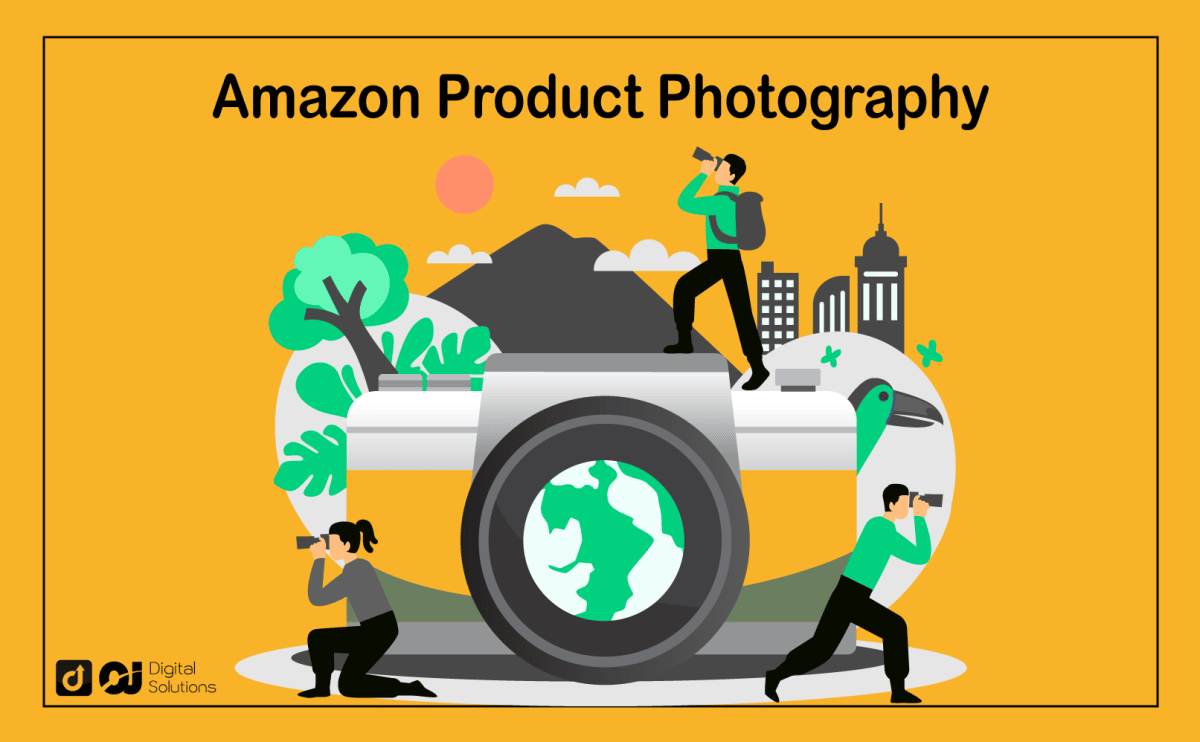If pictures can paint a thousand words, Amazon product photography can rake in a thousand bucks.
In fact, an e-commerce study shows that photos can increase sales by as much as around three times. On top of that, it enhances your brand image too.
In this guide, I’ll discuss Amazon product photography tips, along with the following topics to help you grow your online business:
- Definition of professional product photography
- Basic types of product photos
- Relationship between sales increase and product photos
- Amazon’s technical requirements for taking product pictures
- Suggestions and tips regarding product photography equipment
Ready? Let’s explore the world of Amazon product photos.
What Is Product Photography?
Product pictures for Amazon can’t be just a point-and-click affair.
Product photography is an art and, in some ways, a science. It’s about knowing and taking advantage of specific techniques to present your products in a way that will encourage people to buy your merchandise.
Amazon product photos come in a variety of styles, shapes, and sizes. It’s important to distinguish what pictures tend to make money in particular situations.
Let’s look at the basic types of Amazon product pictures and when to use them.
Basic Types of Professional Product Photography
While there could be millions of Amazon product images out there, we can put them under six basic categories to have an easier grasp on Amazon product photography:
- Individual product shots
- Group product shots
- Lifestyle product shots
- Product scale shots
- Detailed product shots
- Product packaging shots
Now that you know the basic types of Amazon professional photos, let’s discuss them individually.
Individual Product Shots
A picture featuring one object is one of the most popular styles of Amazon product photography.
You can use shots like this in product listings and banner graphics to feature merchandise that isn’t part of a collection or does not come with related items like accessories.
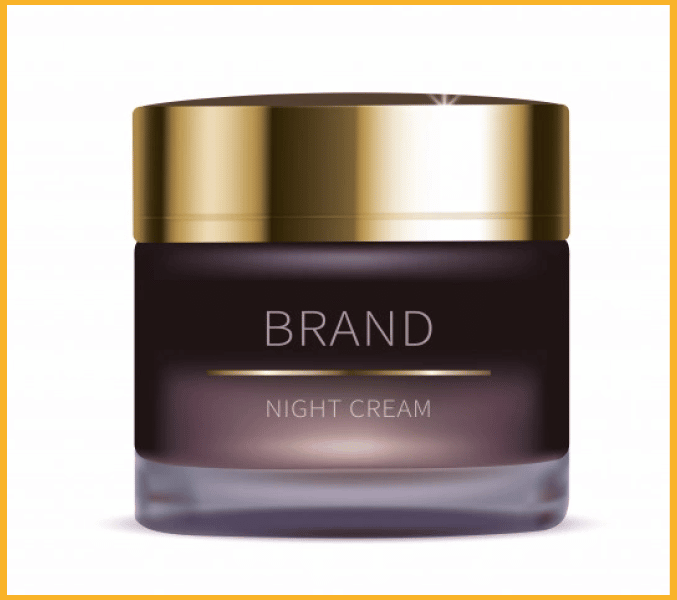
Group Product Shots
Sometimes, one product in a frame isn’t enough. You can feature multiple products in one photo for maximum effect, especially if you’re selling product kits and collections.
Aside from Amazon product listings, social media postings and ads are among the best forms of media to feature shots like these.
These photos give potential buyers a taste of your whole business instead of just one product. The screenshot below shows a set of products that a seller might want to present to potential customers.
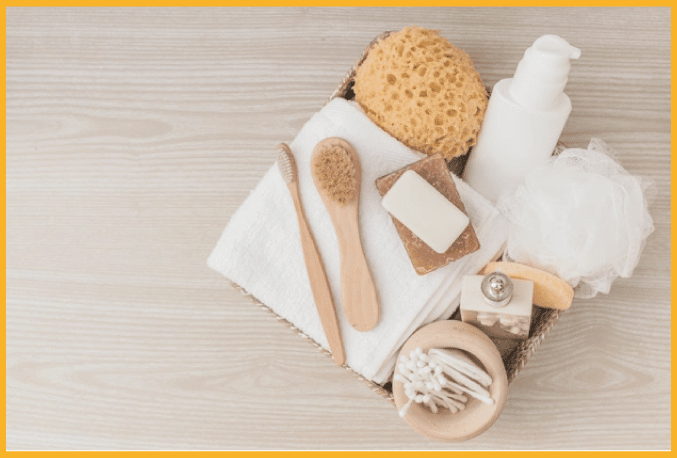
Lifestyle Product Shots
What’s the story behind your product? How can customers maximize it?
Lifestyle images answer these two basic questions. In the absence of video advertisements, these photos help your potential customers deeply connect with your product by learning how your merchandise matches their needs and deepest desires.
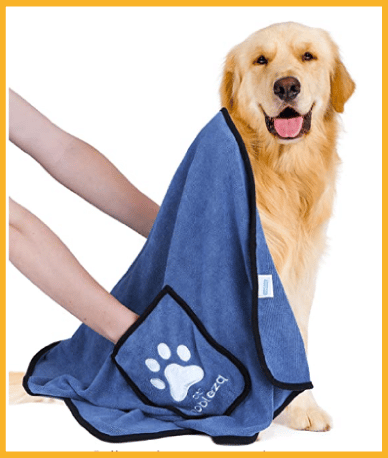
Photos like the one above are best used in many types of Amazon product listings and other channels like social media postings, emails, and newsletters.
If you’d like to learn more about product listings on Amazon, I wrote a guide on creating listings that will help improve your sales figures on the platform.
Product Scale Shots
It’s hard for customers to know the actual size of your merchandise from a simple photo alone. That’s why product scale shots exist.
Usually, products in these shots are placed beside a commonly used item to give potential buyers an idea of the product’s size.
In some cases, product scale shots feature a hand holding the items being sold.
The screenshot below uses familiar objects that help buyers size up the water container for sale.
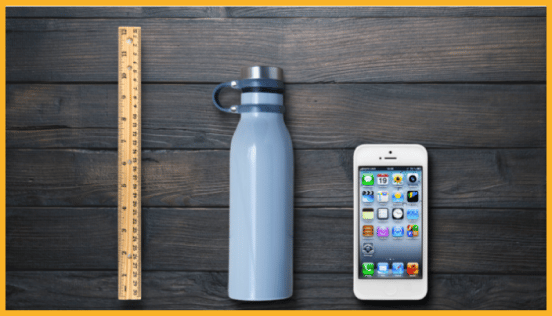
Photos like the above help remove second thoughts from buyers, especially if they are particular about the physical size of their purchases.
Detailed Product Shots
Sometimes, products are too tiny or feature details too small for normal camera angles. Luckily, detailed product shots are here to save the day.
These shots showcase products like jewelry and artistic items that have small but beautiful design elements.
For example, the ring below wouldn’t look as magnificent if the camera’s zoom was a little too far from it.
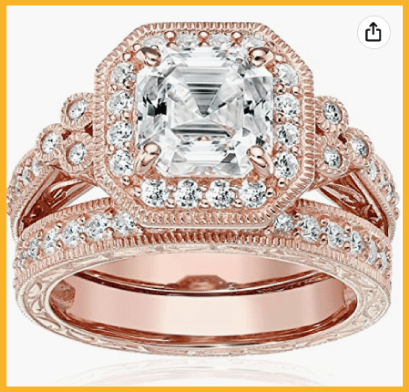
It’s also important to note that shots like the one above require particular lighting and camera settings, such as a macro lens.
I will discuss some lighting tips later on.
Product Packaging Shots
Your product may be the best in the world, but poorly designed or badly presented packaging will still ruin it.
A study suggests that most e-commerce buyers connect packaging with a product’s intrinsic value.
Therefore, you must have product packaging shots when selling on Amazon.
These pictures are especially valuable in giving your customers an idea of what to expect.
For example, would it be better to show just a plastic bag of coffee beans or show off the coffee product’s amazing packaging like in the photo below?
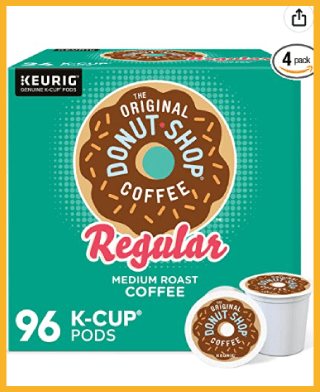
To be fair, showing the coffee beans by themselves isn’t a bad idea at all.
However, it’s sometimes more attractive to feature packaging in the main image while saving the photos of the product’s contents for secondary images.
Now that you’ve discovered the basic types of product photos for Amazon, it’s time to learn how they could either fatten — or flatten — your wallet.
How Great Product Images Can Increase Amazon Sales
Quality photos could lead to a huge quantity of sales.
Research indicates that 93% of online shoppers consider visual appearance a key factor when buying products.
Interestingly, another study also suggests that a larger product photo can increase sales by 9.46%.
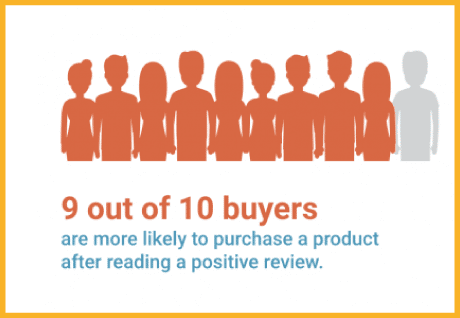
Additionally, the average human being is also highly visual, able to process pictures 60,000 times quicker than text.
If you have visually appealing and informative photos, you have already provided the first line of excellent customer service.
After all, you won’t be personally there to show your product to the customer.
On that note, better customer service usually leads to better sales figures.
Now that we’ve covered how great product photos can positively impact your sales figures, it’s time to learn how to produce them.
Focus on Amazon’s Technical Requirements Before Shooting
Rules are rules, even with Amazon product photography. If you disregard Amazon photography guidelines, customers won’t see your products, no matter how amazing your merchandise is.
Even if your product photo looks excellent, the image won’t be uploaded to your listing if you fail to abide by the following technical requirements.
These apply to both the main and eight secondary images you are allowed to upload.
- The product must fill at least 85% of the image frame.
- Sellers are allowed to use only a pure white background.
- Images must be saved in JPEG, TIFF, PNG, or GIF file formats. Animated GIF files are not supported.
- Images must not be blurry, pixelated, or have jagged edges.
- Images must not include any Amazon logos or related trademarks made by Amazon or otherwise.
- For better clarity, a photo file must be at least 1,600px in one dimension. However, it must not exceed 10,000px. The minimum allowable resolution is 500px.
The minimum allowable size of 500px is crucial. It’s actually one of the most common questions asked by Amazon sellers, which I’ll also discuss later.
The above are just some of Amazon’s many rules and may be subject to change depending on the e-commerce company’s business policy directions.
Gather the Right Equipment
Once you’re familiar with the rules of the game, it’s time to know the tools of the trade. The following items can help you create great photos that could lead to bigger sales.
- Background material
- Background stand
- Light sources and enhancers
- Artificial light stand
- Tripod or other support structure
- A great camera
- Shooting table
Let’s go through each item above and see how they contribute to awesome Amazon photos.
Background Material
Having an Amazon-compliant white background for product photos has its challenges.
For instance, you may have to deal with undesirable shadows and sharp angles. To get rid of these “photo bummers,” you can use a photography shooting tent like the one below.
Alternatively, you can use white foam boards, which minimize shadows by reflecting natural light toward your product.
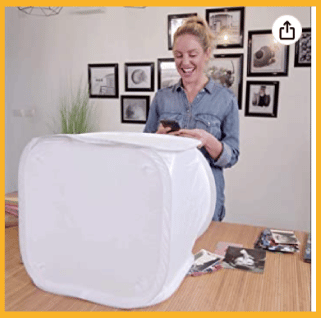

You can also use a white seamless paper roll to produce white background images. A 4-ft roll will work for small to medium products, while 10- to 15-ft rolls are enough for larger items.
Background Stand
You probably guessed it right. Your background needs a supporting structure.
Highly recommended background stands are those that can support both four- and eight-foot paper rolls.
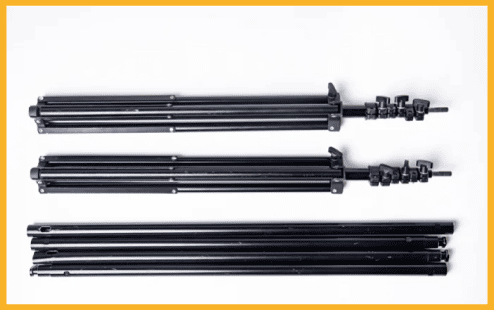
Light Sources and Enhancers
Quality images won’t be possible without quality lighting.
Light can come from either natural or artificial sources.
Let’s discuss the light from the sun first.
Natural sunlight is good, especially if you want soft colors and somewhat reduced shadows.
Smaller products work better with small windows, while bigger items are better shot near larger windows.
On the other hand, if you’re thinking of using lamps, bright white lights are ideal for Amazon product photos.
LED lamps can produce this kind of light.
Using a light source that doesn’t emit white light can distort the colors of your products.
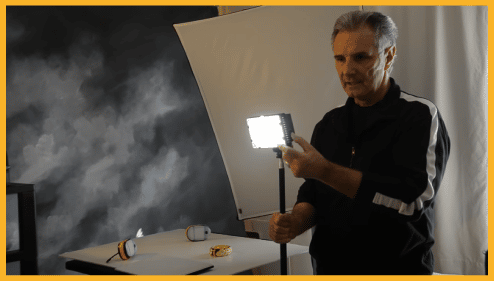
LED lamps are best used with square softboxes like the one below.
They can produce a close substitute for natural light.
The LED lamp in the picture below is ideal if you have bigger and more colorful products to showcase.
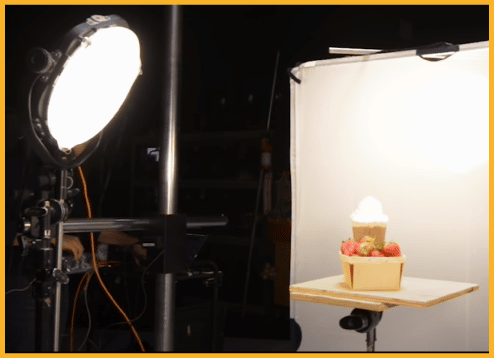
Artificial Light Stand
When buying your light stand, consider the weight of your light source and light modifier (for example, a softbox).
The photo below shows a light stand supporting a large square softbox and a light source.
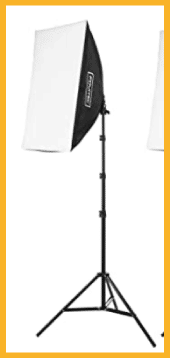
Use a regular light stand for flash guns and small light bulbs.
However, buy or borrow a C-stand made of heavy-duty aluminum alloy for larger light sources.
Check out the picture below to see what a C-stand looks like.
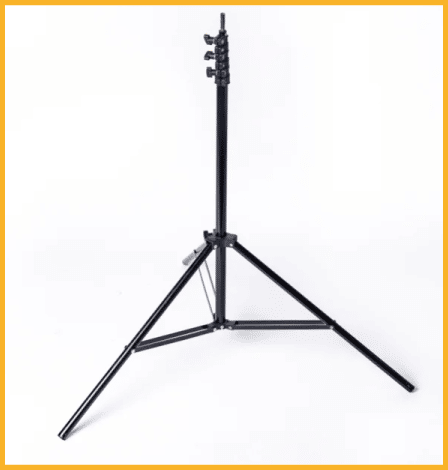
Tripod or Other Support Structure
If you don’t want your product to look blurred due to camera vibrations, invest in a tripod or any steady surface.
At the very least, your tripod can be a box or a book you can place your camera on during product photoshoots.
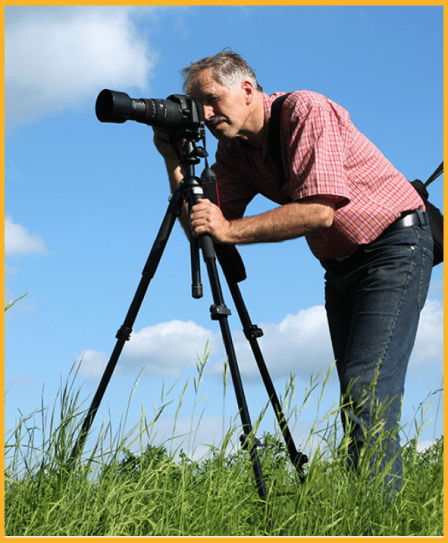
However, if you want convenience and professional-looking photos, a good tripod is a must. A tripod can let you take any product photo from any angle you want with ease.
A Great Camera
DSLR cameras take the best photos. Though some of these cameras can be expensive, some cost a little over $200.
You might be thinking, “Can’t I just use smartphones?”
Technically speaking, the answer is yes. However, very few smartphones can capture the smallest product details like a DSLR can. DSLR cameras also give you more freedom with photo settings for the best Amazon marketing effect.
If a DSLR is not yet within your budget, you can use your smartphone as long as you don’t use the zoom-in feature. Phone zoom features usually lessen the visual quality of your photos.
If you’re going to use a smartphone, make sure that it can save files that meet Amazon’s technical requirements.
There are tripods on the market that support smartphones, meaning you don’t need to exert excessive physical effort to achieve particular shot angles.
The Shooting Table (and Setup)
The table is the “stage” where your product can stand tall and proud. Ideal tables range from a 24-square-inch table to a 24 x 48-inch one.
The shooting table works together with the background stand. The stand is placed behind the table and the showcased product, as you can see in the photo below.

Now that you have all the tools you need, it’s time to learn how to put them to good use.
Amazon Product Photography Tips
Product photography for Amazon listings is a different ballgame from your usual social media photo frenzy. Apply these professional photography tips to improve your Amazon listing photos.
Set the Camera to the Correct Settings
Not all cameras are built equal. However, you could tweak the following settings for many of them to ensure you get high-quality images.
- Turn off the flash.
- Set the camera’s white balance to Auto (for example, from WB to AWB).
- Make sure the camera’s image setting is adjusted for top quality. JPG Fine is usually the setting.
- Set file size to L or Large.
- Adjust the exposure setting to Manual.
- Use Optical Zoom instead of Digital Zoom.
Clean Up Your Product
Dirty products are unattractive. Even with professional image editing software, making dirty items look clean can be challenging.
To avoid this problem, wipe the surface of your product with a microfiber cloth. Remove dust with a clean makeup brush or an air blaster, like the one below.
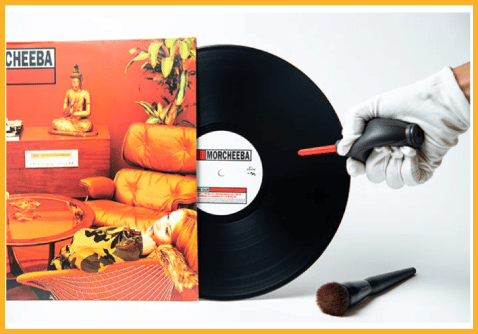
Capture Your Product Image From Every Angle
Just remember. There is no wrong angle in taking product pictures for Amazon. At least initially.
Why? For one thing, the more angles you have of your product, the more choices you have for your product listings.
Also, having different angles of product photos lets online shoppers examine it as if they were looking at it in person.
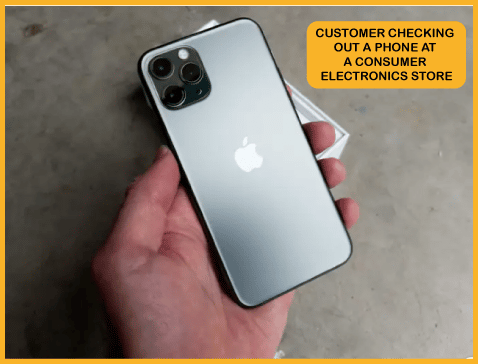
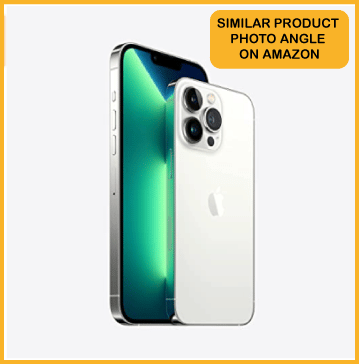
Highlight Every Inch of Your Product
Your customers must see every part of your product, even the smallest details.
Amazon’s “1600px rule” has a purpose. The higher the number of pixels in your product photo, the more detailed each inch of your merchandise becomes.
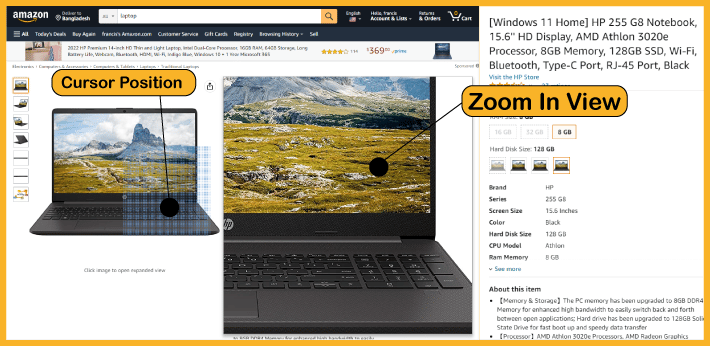
Images with higher pixel counts enable your customers to inspect your product up close as if they were actually close to them.
However, having too many pixels can be disadvantageous to customers viewing your products via smartphones. We’ll get to that in the FAQs section below.
Having the right camera settings and taking pictures from different angles will allow potential buyers to see your product more clearly.
Finding the right settings for your camera is as vital as identifying the most appealing angles of your products.
Add Multiple Product Variants
Different folks have different tastes.
For instance, not everyone likes the same smartphone case color. If you’re selling five different case colors on Amazon, make sure you take photos of all the variants in your inventory. Check out the picture below to see what I mean.
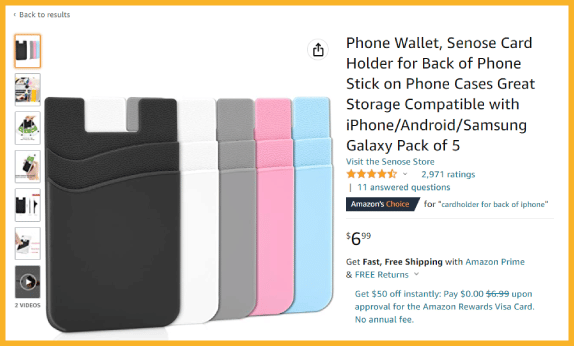
Avoid Excessively Edited Images
If your product looks too good to be true, potential buyers might sense it.
Therefore, it is best to edit photos with software like Photoshop at a reasonable level. Bombarding your product photos with too many effects might make them look unreal, reducing your credibility among customers.
Remember, no amount of editing skill beats knowing how to take photos for Amazon product listings.
Include At Least One Lifestyle Image
As mentioned earlier, lifestyle images help form an emotional connection between your product and your customer.
The more customers can imagine themselves using your product, the more they can relate to it. The more people can relate to your merchandise, the more likely they will buy it.
That’s why some lifestyle images feature human models, like the product below.
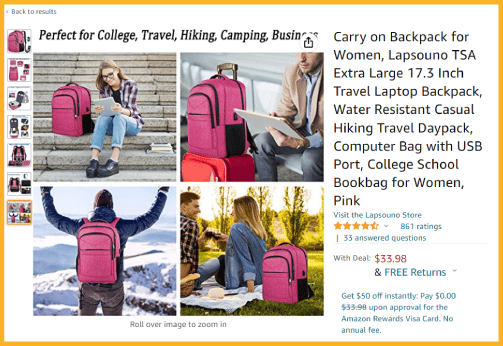
Aside from forming emotional connections, lifestyle images do the following:
- Answer questions like “How do people use this product?” and “Who or what is this product meant for?”
- Tell a story that is relatable or touches on the values people hold close to their hearts.
- Indicate the environments the products are used in.
At this point, I’ve covered everything about taking high-quality photos for Amazon. Let’s move on to frequently asked questions about the topic.
FAQ – Frequently Asked Questions
Which is Better, Taking Photos on my Own or Hiring a Professional Photographer?
In some cases, it’s best to hire professionals. These include taking pictures of white products on a white background or photos depicting how light reflects off a product.
In case you need to hire photographers, it’s best to hire from companies that offer Amazon product photography services. Avoid freelancing websites since it can be hit or miss with them. Retaking poor photos defeats the purpose of hiring professional photographers.
However, for typical scenarios, taking photos yourself will save you money. This could also be a satisfying experience as you explore your creative side.
What are Leading Lines in Photography?
Leading lines direct the viewer’s eye in a specific direction or towards a particular point of a picture. Though Amazon does not require leading lines, you can arrange some parts of your product photo as leading lines that help uniquely and beautifully present your product.
The wheat elements of the photo below act as inviting leading lines that highlight the beauty of the reusable spoons, forks, and chopsticks that are being sold.
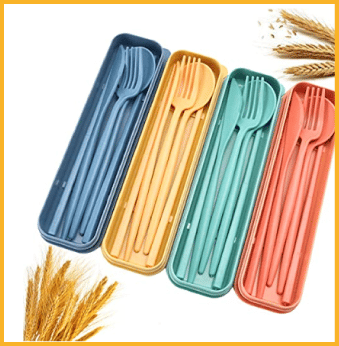
Why are my Amazon Images Blurry?
Amazon product photos can be blurry due to various reasons. For example, potential customers may see your product photos differently depending on their browser. This is a technical issue beyond your control.
In the case of browser-related issues, consider writing a disclaimer in your product listing, like “photos may blur depending on the browser” or something similar.
However, there are things you can do to avoid image blurring. For example, you can use software to generate your images and set the compression level to High quality.
If your photos appear fine on a laptop but not on a smartphone, the blurring is due to Amazon’s tendency to compress extremely large files for easier mobile access. Try to reach the minimum pixel requirement of Amazon instead of going over it.
Excessively big photo files tend to be compressed more, which also means that blurring could increase across different devices.
Can I Put My Logo on Amazon Pictures?
No, you cannot. Based on Amazon’s current seller policy, logos, borders, color blocks, and similar elements are not allowed in product photos.
Are Amazon Product Images Copyrighted?
Amazon product images are only copyrighted when the listing indicates it. However, this does not mean you can get product photos from other sellers if they do not claim copyright ownership over them.
It is better to stay on the safe side; either use your own photo or ask permission from the owners of the photos you want to use. Other than that, you can pay for the rights to stock images, which can vary in terms of price.
Bottom Line
Amazon product photography exists for a practical objective, which is to increase your sales. Good pictures also help bring a smile to your customers’ faces, which pays off in the long run.
Armed with the knowledge and tools discussed above, you can effectively utilize photos on your journey towards business growth and increased customer satisfaction on Amazon.
At OJ Digital Solutions, we don’t offer amazon product photography service, but we do offer infographic images design, extremely important to boost click through rate and conversion rate of your amazon product listing.

